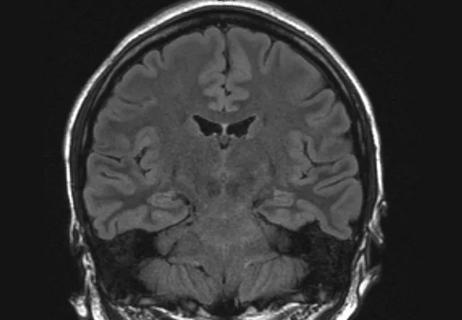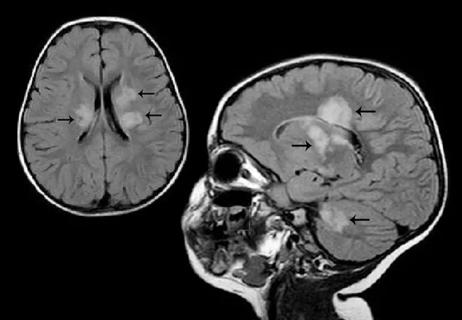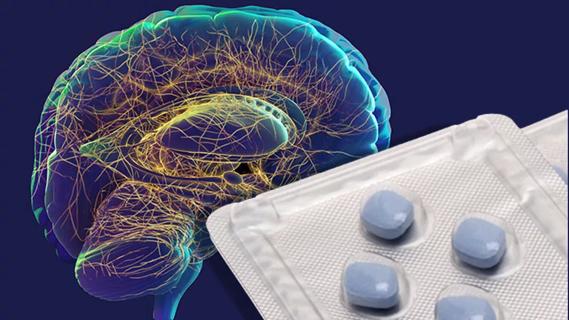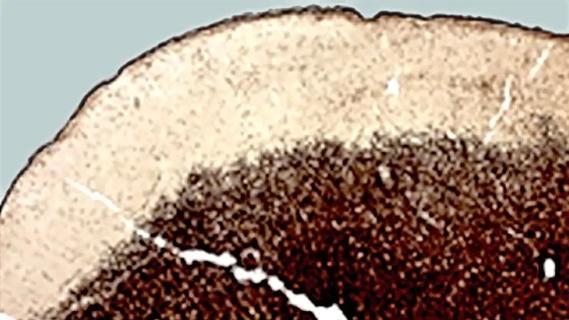Relapse rates were lower with oral or infusion therapy after initial injectable DMT

Treatment of pediatric-onset multiple sclerosis (POMS) is challenging for a number of reasons, including lack of efficacy data for most disease-modifying therapies (DMTs) in children. Guidance for switching DMTs in the pediatric population is particularly limited, a gap that a new Cleveland Clinic-led cohort study was designed to help fill.
Advertisement
Cleveland Clinic is a non-profit academic medical center. Advertising on our site helps support our mission. We do not endorse non-Cleveland Clinic products or services. Policy
Presented as a poster at the American Academy of Neurology 2023 annual meeting, the research was conducted at 12 clinics in the U.S. Network of Pediatric MS Centers. This nationwide network provides comprehensive evaluation and care to children and teens with MS and related demyelinating disorders.
“The adjusted rate ratios we calculated showed that for patients who switched from platform injectable DMT, relapse rates were 62% lower when switching to an oral therapy and 75% lower when switching to an infusion, compared with switching to another injectable,” says first author Aaron Abrams, MD, a pediatric MS and neuroimmunology specialist in Cleveland Clinic’s Center for Pediatric Neurosciences and Mellen Center for Multiple Sclerosis. “We were surprised to find that there was no significant difference in terms of the time it took to develop new or enlarging T2 MRI lesions, although it took longer to develop gadolinium-enhancing lesions in infusion switchers as compared to injectable switchers.”
For the study, the investigators assessed results in 212 children with MS or clinically isolated syndrome who switched DMT before age 18 years. Of these patients, 67% were female and 95% had MS. All had initially been treated with interferon-beta or glatiramer acetate (older “platform” injectables) and then were switched to another injectable or a DMT that was given orally (dimethyl fumarate, fingolimod, teriflunomide) or via infusion (natalizumab, rituximab, ocrelizumab, alemtuzumab).
Advertisement
The authors modeled the relapse rate after the DMT switches using negative binomial regression, with adjustment for preidentified confounders (onset age, disease duration, sex, race/ethnicity, body mass index, first event severity and localization, annualized relapse rate, new T2 lesions and new gadolinium-enhancing lesions).
Switches among the 212 patients were broken down as follows:
Compared with the group that switched from injectable to injectable, the oral and infusion switchers were older at disease onset (12.3 years for injectable vs. 13.5 for oral and 14.2 for infusion) and older at the switch date (14.6 vs. 16 and 15.7 years, respectively). Patients switched to infusion DMT were more likely to have new enhancing lesions prior to switching (67% for infusion vs. 45% for injectable and 28% for oral).
Negative binomial regression showed that the annualized relapse rate (ARR) was significantly lower in patients switched to oral or infusion DMT compared with those switched to another injectable (P < 0.001 for both analyses). Specific ARRs were as follows:
Advertisement
The adjusted number needed to treat (NNT) to prevent one relapse with an oral DMT over an injectable DMT was 2.70; the NNT to prevent one relapse with an infusion DMT over an injectable was 2.22.
“This study provides evidence that opting for an oral formulation or an infusion is better than another injectable in patients with POMS who are on platform injectable therapy and in whom there is a valid reason to switch to another DMT,” Dr. Abrams observes. “Making that change can be scary for a family, particularly if a child has been on an injectable a long time, but it’s important for helping to control disease activity moving forward.”
To promote better neurologic function in the long term in the population with a pediatric demyelinating disease like POMS, Dr. Abrams also emphasizes the need for early intervention with high-efficacy medication. “Any patient or parent concerned about possible neuroimmunologic disease needs to know how important it is to seek out a specialist for a full evaluation,” he says. “Only then can they receive the best information and therapy available.”
Advertisement
Advertisement

Diagnosis and treatment of MOG antibody-associated disease

New review makes the case for earlier pediatric enrollment and other changes

Series demonstrates comparable results with an MRI-based decision strategy

Testing options and therapies are expanding for this poorly understood sleep disorder

Real-world claims data and tissue culture studies set the stage for randomized clinical testing

Digital subtraction angiography remains central to assessment of ‘benign’ PMSAH

Cleveland Clinic neuromuscular specialist shares insights on AI in his field and beyond

Findings challenge dogma that microglia are exclusively destructive regardless of location in brain